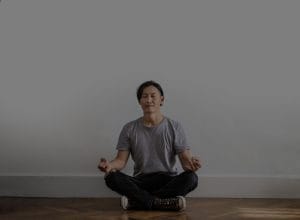**Abstract**: Discover how to create a serene environment using Feng Shui principles, designed to alleviate stress and enhance tranquility in your life. Transform your space into a calming oasis with simple adjustments.
Understanding Feng Shui: The Art of Space Harmony
Feng Shui, an ancient Chinese practice, revolves around the concept of harmonizing individuals with their environment. It emphasizes the flow of energy, or “Chi,” which influences our well-being. By strategically arranging your space, you can cultivate a calming atmosphere that promotes relaxation and reduces stress. This holistic approach is not merely about aesthetics; it’s about creating an environment that nurtures your mental and emotional health.
Decluttering: The First Step to Serenity
A cluttered space can lead to a cluttered mind. Begin your Feng Shui journey by decluttering your home. Remove items that no longer serve a purpose or bring joy. This process not only creates physical space but also allows for mental clarity. According to a study from the Princeton University Neuroscience Institute, clutter can hinder your ability to focus and process information. By simplifying your surroundings, you invite peace and tranquility into your life.
Color Psychology: Choosing Calming Hues
Colors play a crucial role in influencing our emotions. In Feng Shui, certain colors are associated with specific energies. Soft blues and greens evoke calmness, while warm earth tones create a sense of stability. Consider painting your walls in these soothing shades or incorporating them through decor. A study from the University of British Columbia found that exposure to calming colors can significantly reduce stress levels, making your space a sanctuary of relaxation.
Natural Elements: Bringing the Outdoors In
Integrating natural elements into your home can enhance your Feng Shui practice. Plants not only purify the air but also bring life and energy into your space. Research from NASA shows that certain houseplants can remove toxins and improve indoor air quality. Consider adding peace lilies, snake plants, or bamboo to your environment. Additionally, incorporating natural materials like wood and stone can create a grounding effect, fostering a serene atmosphere.
Creating a Zen Space: The Power of Intentional Design
Designate a specific area in your home as a Zen space for relaxation and meditation. This space should be free from distractions, allowing you to connect with your inner self. Use comfortable seating, soft lighting, and calming decor to enhance the ambiance. According to a study published in the Journal of Environmental Psychology, environments designed for relaxation can significantly reduce stress and anxiety levels. Personalize this space with items that resonate with you, such as crystals or candles, to deepen your connection.
Sound and Aroma: Enhancing the Sensory Experience
Incorporating soothing sounds and scents can elevate your Feng Shui practice. Use sound machines or calming music to create a peaceful auditory environment. Additionally, essential oils like lavender or chamomile can promote relaxation through aromatherapy. A study from the International Journal of Neuroscience found that certain scents can trigger positive emotional responses, making your space feel more inviting and serene.
Conclusion: Embrace Tranquility Through Feng Shui
Creating a calm environment through Feng Shui is a transformative journey that nurtures your well-being. By decluttering, choosing calming colors, integrating natural elements, designing intentional spaces, and enhancing sensory experiences, you can cultivate a sanctuary that alleviates stress. Embrace these Feng Shui solutions and watch as your life transforms into a more peaceful and harmonious existence. Remember, your space is a reflection of your inner self; make it a haven of tranquility.










